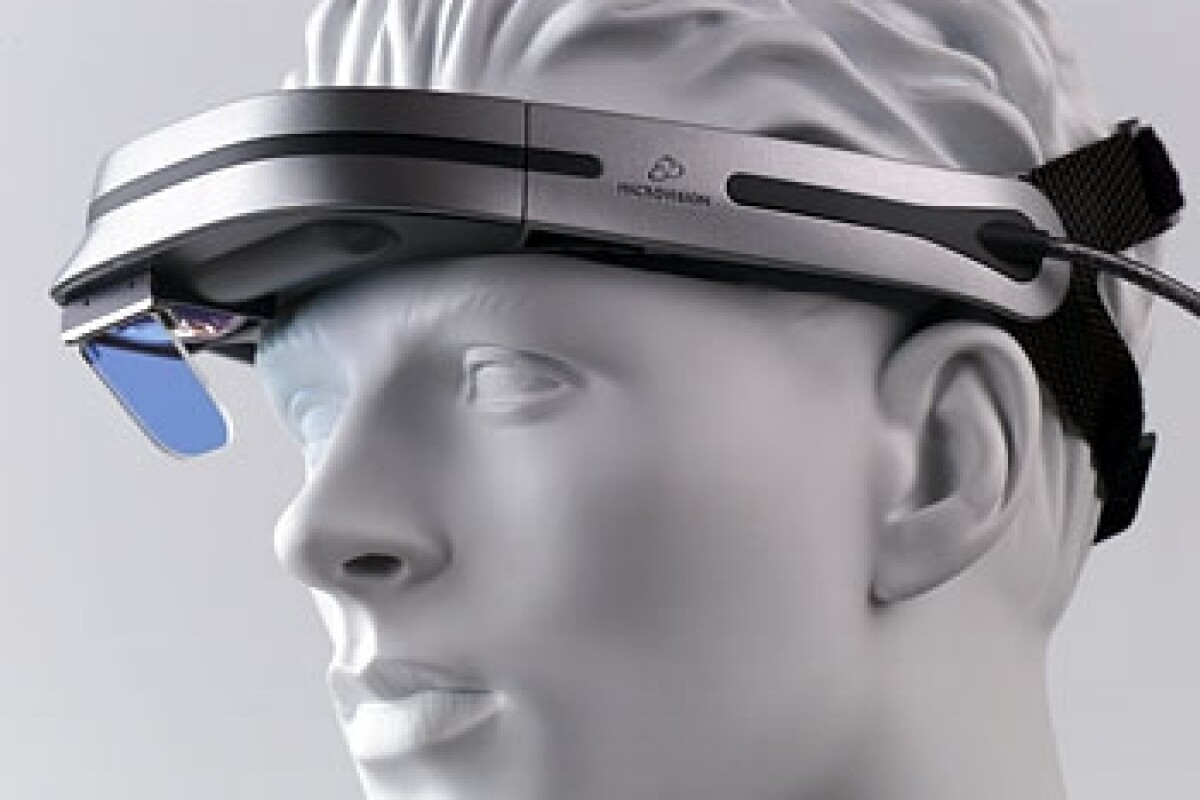October 1, 2004Wearable 3D Augmented Reality displays have taken a leap forward in viability with the announcement of Microvision's 7.6 Million Pixel Microdisplay unit that can be incorporated into eyeglasses, goggles or helmets to create a stereoscopic, 3-D effect.
These compact, high-resolution displays can further enhance the visual realism of the interactive experience to make the simulated environment more engaging.
Unlike Virtual Reality, where the user's field of view is completely replaced with an artificial visual environment, Augmented Reality uses another technology known as "head tracking" in conjunction with augmented vision to overlay complimentary information on the user's view.
The imaging system "knows" where the user is looking and adjusts the displayed image accordingly. For example, when viewing a map, it may be beneficial to orient the map to the user's field of view so that the user can identify landmarks in the real world by their proximity to landmarks on the map.
Microvisions's new, scalable architecture for its microdisplays uses a single scanner to direct multiple beams simultaneously into separate zones of an image.
The new architecture has the potential to deliver a bright, high resolution image over a very wide field of view creating an immersive "big-screen" effect that will 'supersize' applications such as personal theatre and gaming.
Because the display utilizes conventional "surface emitting" LEDs as light sources, it holds the promise of achieving very low cost relative to display resolution and brightness.
"This is a major milestone in the development of color microdisplays for consumer products," said Steve Willey, President of Microvision. "With our earlier single channel architecture, we were approaching a practical limit in field of view of around 25 degrees.
Now we have the flexibility of increasing display performance by adding inexpensive LEDs and writing multiple zones. This architecture gives us the potential to achieve much wider fields of view and higher resolution necessary for the higher performance imaging and consumer products we are targeting."






